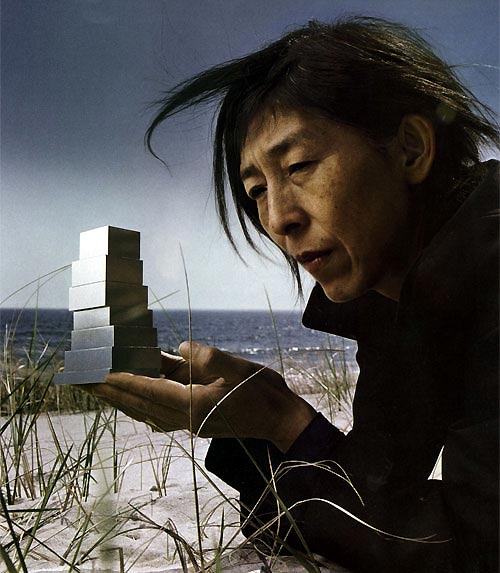ADD URL
>>interior
reports
collections
catwalk tv
design
who is who
motor
culture
film
foto
cuisine
astrology
cosmetics
fragrances
antiAging
hair
beautyradar
styleradar
fashion.at - magazine |
search |
A Japanese architect on assessing the Zeitgeist fig.: Portrait Kazuyo Sejima "She is an architect who uses the maximum simplicity to link the material and the abstract," Japanese architect Toyo Ito about Kazuyo Sejima Kazuyo SejimaIn, who has a degree in architecture from the Japan Women's University, has designed contemporary architecture for Christian Dior (Christian Dior Building in Omotesando/Tokyo), the New Museum of Contemporary Art in New York or the Serpentine Pavilion in London. In 2000, she was the curator for the Japanese Pavilion, called 'City of Girls', at the 7th International Architecture Exhibition of the Biennale di Venezia. Kazuyo Sejima has taught at Princeton University and at the Polytechnique de Lausanne. She is currently a lecturer at Keio University.
Kazuyo Sejima about her ideas for the next Biennale: inside and outside Perhaps the oxymoron can represent a productive new paradigm; can these binaries (intersections of public/private, global/local, artificial/natural, monumental/mundane, complex/simple, symbolic/pragmatic, fake/authentic, active/passive, thickness/thinness) lead to a duality capable of blurring these boundaries? How can the unexpected interdependency of extraordinary spaces create a communal/symbiotic dialogue between adjacencies? Equally, there is another thread of interest; people in architecture, human encounters in both public and private scenarios, both as creators and users. This is an issue of individual life in interplay with the community. It may be as simple as ‘people meet in architecture.’ In its totality the Biennale can both a new and active forum for contemporary ideas as well as a close reading of buildings themselves." |
© since 1996 sawetz |
 Kazuyo Sejima
Kazuyo Sejima